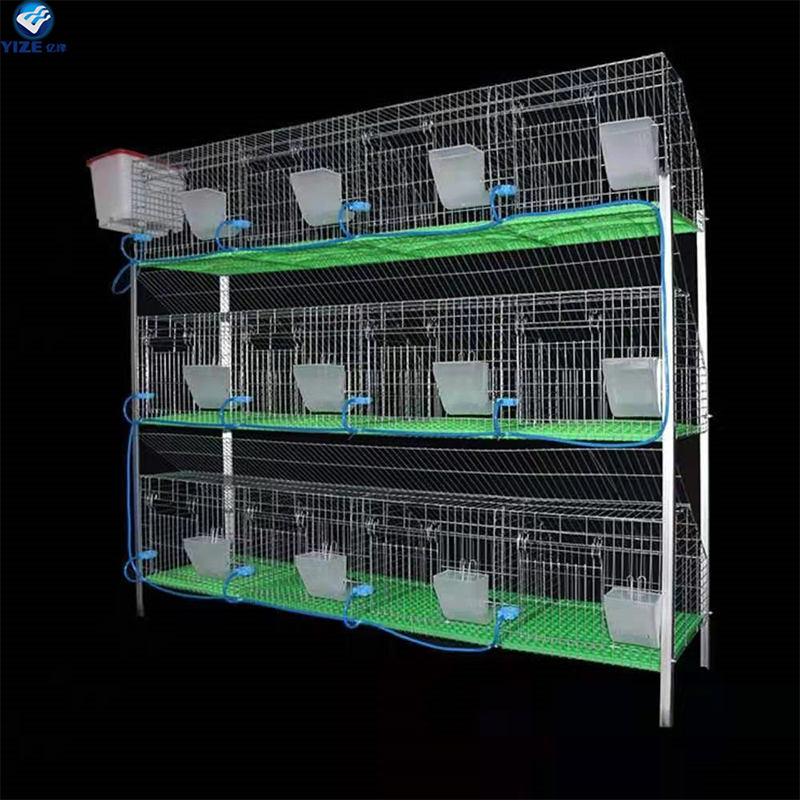chick brooder cage
Nov . 30, 2024 21:33 Back to list
chick brooder cage
Understanding Chick Brooder Cages A Comprehensive Guide
Raising chickens can be a rewarding endeavor, whether you're doing it for eggs, meat, or simply as pets. However, ensuring that your chicks are raised in a healthy and nurturing environment is crucial to their survival and growth. One of the most effective ways to achieve this is by utilizing a chick brooder cage. This article will explore the essential features, benefits, and best practices for using chick brooder cages in your poultry rearing operations.
What is a Chick Brooder Cage?
A chick brooder cage is an enclosed space designed specifically to house young chicks during their initial weeks after hatching. This environment mimics natural conditions, providing warmth, safety, and space for the chicks to thrive. Typically made from materials like wood, plastic, or metal, brooder cages come in various sizes and designs to accommodate different flock sizes and needs.
Importance of a Brooder Cage
When chicks are newly hatched, they are particularly vulnerable to temperature fluctuations, predators, and diseases. A brooder cage offers several advantages 1. Temperature Control Newly hatched chicks require specific temperatures to maintain their body heat since they cannot regulate their body temperature independently. A brooder cage allows for the inclusion of heat sources, such as heat lamps or heating pads, ensuring that the temperature remains within the ideal range of 90-95 degrees Fahrenheit for the first week, gradually decreasing as they grow. 2. Protection from Predators Young chicks are susceptible to predators, whether they are larger birds or animals like cats and dogs. A brooder cage provides a secure environment that protects the chicks from potential threats, allowing them to grow without fear.
3. Health Management A controlled environment minimizes exposure to diseases that might be present in a larger pen or outdoors. By keeping young chicks in a brooder cage, you can monitor their health more effectively and implement any necessary interventions.
Designing Your Chick Brooder Cage
When constructing or purchasing a chick brooder cage, consider the following key elements
1. Space Each chick requires sufficient space to move around and establish its own territory. A good rule of thumb is to provide about 0.5 square feet of space per chick in the cage.
2. Ventilation Proper airflow is essential to keep the environment healthy and prevent stale air buildup. Incorporate vents or mesh sides in your design to ensure adequate ventilation.
chick brooder cage

3. Bedding Use absorbent bedding like pine shavings or straw to keep the cage clean and comfortable. Change the bedding regularly to prevent ammonia buildup and promote good hygiene.
4. Food and Water Stations Equip the brooder cage with easy access to food and water to ensure the chicks can eat and drink without difficulty. Use shallow dishes for water to prevent drowning and ensure feeders cater to their small size.
5. Heat Source As mentioned earlier, a heat source is crucial for maintaining the right temperature. Heat lamps should be positioned safely to avoid any risk of fire while providing sufficient warmth.
Best Practices for Raising Chicks in a Brooder Cage
1. Regular Monitoring Check the temperature and the health of your chicks daily. If you notice them huddling together, it may indicate they are too cold, while spreading out might suggest they are too hot.
2. Gradual Temperature Adjustment As chicks mature, gradually reduce the temperature by about 5 degrees Fahrenheit each week until they are fully feathered. This helps them acclimatize to normal living conditions.
3. Socialization Chicks are social creatures, so consider brooding them in small groups rather than isolating single chicks. This encourages natural behaviors and reduces stress.
4. Transition to Coop When your chicks are around 6-8 weeks old and have developed adult feathers, it's time to transition them to an outdoor coop. Ensure the coop is secure, with adequate space and resources for the growing chickens.
Conclusion
Using a chick brooder cage is crucial for successful chicken rearing. By providing a controlled, safe, and nurturing environment, you can significantly improve the health and growth of your chicks. Whether you are a hobbyist or a commercial farmer, understanding the importance of brooder cages and implementing best practices will set the foundation for a thriving flock. Happy chick raising!
-
Automatic Feeding Line System-Pan Feeder Nipple Drinker|Anping County Yize Metal Products Co., Ltd.
NewsJul.29,2025
-
Hot Sale 24 & 18 Door Rabbit Cages - Premium Breeding Solutions
NewsJul.25,2025
-
Automatic Feeding Line System Pan Feeder Nipple Drinker - Anping County Yize Metal Products Co., Ltd.
NewsJul.21,2025
-
Automatic Feeding Line System Pan Feeder Nipple Drinker - Anping County Yize Metal Products Co., Ltd.
NewsJul.21,2025
-
Automatic Feeding Line System - Anping Yize | Precision & Nipple
NewsJul.21,2025
-
Automatic Feeding Line System - Anping Yize | Precision & Nipple
NewsJul.21,2025






